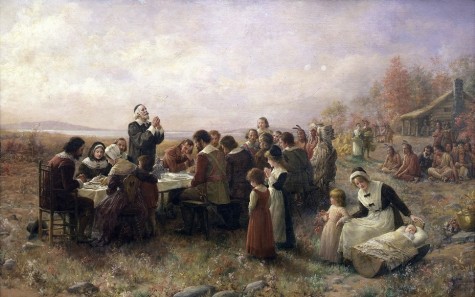A fading turkey tradition?
November 22, 2015
Thanksgiving. It’s here. You are about to find yourself at a table face to face with Ben Franklin’s choice for the national bird. Or are you? In 1992, 91% of Americans reported that they ate turkey on Thanksgiving Day. In 2014, that number dropped to 88%. Shocking, I know, but it does show that more and more people are questioning this tradition. But why is it a tradition anyway? Supposedly, the pilgrims sat around their big table with their newly found Native American friends and stuffed themselves with the feathered foul, but this isn’t true. Like most people at the time, the pilgrims most likely ate venison. In fact it wasn’t until after Sarah Josepha Hale, writer of “Mary Had a Little Lamb”, wrote another piece, Northwood that turkey began to fill Americans’ thankful stomachs every fourth Thursday of November. She described the feast and its turkey centerpiece with enough detail and assurance to solidify the inseparability of this bird and the holiday itself. It would be easy to acclaim this act to the mischief of marketers, those who exploit the people’s enthusiasm for the holidays for their own personal profit. A commentary on the commercialization of the biggest holidays (and even the smallest) would by no means be misplaced on this subject. However, to do some right by Mrs. Hale, it’s worth mentioning that she was not trying to increase turkey sales. In fact, it was because of her work in the subject that Thanksgiving was declared a national holiday. Her observations of the feast may have been incorrect, but had she not made them we likely would have little reason to care what sort of food the pilgrims ate in 1621, and perhaps equally little reason to care what sort of food we ate on the fourth Thursday of November. So whilst the world of holidays surely has its fair share of commercial exploitation, Hale’s story falls under another, more hopeful category; one that can give us one more thing to be thankful for, and a real good time to do it.































